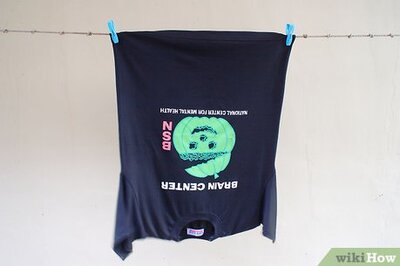
views
At a time when people across the globe are not only discussing climate change but also implementing steps to minimise environmental harms, it is imperative that among other things, we do not forget how massive fast fashion's contribution has been in polluting the environment and wasting resources.
In fact, according to EcoWatch, fast fashion industry is the second largest polluter in the world only after oil.
Based out of US, EcoWatch is a news site with a vision to spread awareness about environmental issues, in turn driving citizens to incorporate changes in their lifestyle so as to create a healthier and greener planet.
Let's put everything into perspective. A luxury fashion retailer recently burnt unsold clothes and beauty products worth millions of pounds in order to protect its brand value. While the fashion giant could have put the unsold products on sale at a cheaper price, it chose to maintain the exclusivity factor by burning clothes.
This is one example of how grim the situation is and how massive fast fashion's carbon footprint is with tonnes of textile being discarded into the landfills unethically by retailers across the world. In fact, the impact of use of toxic dyes and unsustainable processes to source materials for manufacturing to keep up with fast changing fashion trends is unimaginable.
What exactly is fast fashion?
Well, in simple terms, fast fashion or disposable fashion, is an approach to making runway designs available to the consumers both quickly and with an affordable price tag. Fast fashion retailers like H&M, Primark, Zara, Forever 21 among others, mass produce collections inspired by latest catwalk creations, make latest trends easily available to those ready to shell out a few thousands more.
While the focus is on manufacturing speed and maintaining a low price, not much attention is given to the amount of waste the process causes. On the other hand, a lot of times even the quality of the product is compromised and the money that each customer pays for a given piece isn't the actual worth of the garment.
With this mutual, unsaid understanding between retailers and customers to accept lesser quality garments in exchange for a lower price, it becomes easier for buyers to discard pieces without giving it a thought and quickly moving on to the next fashion trend, consequently causing tremendous wastage.
"Fast fashion comes and goes too fast, creates unhappy work conditions, unsatisfied consumer appetites and excess of waste," said designer Anavila Misra.
And while there is no easy or quick solution to fast fashion’s environmental harms and impacts, gradually designers and even to some extent consumers are becoming environmentally conscious and moving towards sustainable fashion.
What is sustainable fashion?
Sustainable fashion synonymous with eco-friendly and ethical fashion, is a way of manufacturing apparels that they not only benefit the weavers, are kinder to our skin but also minimise damage to the environment.
While speaking about how sustainable fashion aims at minimising the use of toxic pesticides, chemicals and reduce water wastage, during her interaction with News18, Anavila also pointed out that a holistic approach towards fashion – from using the right textile, the right processes and having happy workers who create conscious clothing,-- is the way forward.
"I think it is as simple as creating and sharing value at every level of the process from the loom to the runways to stores and eventually into the consumer wardrobes."
Ways to move towards sustainable dressing
Several designers, who are extremely careful of the carbon footprint their brands have on planet Earth, are of the opinion that rather than chasing seasonal trends one must look at creating a wardrobe filled with timeless and exquisite pieces.
“Consumers need to look to buying high quality, versatile and timeless pieces that can be reinvented in many different ways. Build a gorgeous wardrobe that you can pass on and also be environmentally sustainable,” said designer Amit Aggarwal.
Reasons why consumers may not opt for sustainable options
First is affordability. While embracing sustainable clothing creates greener environment, it comes with a price tag unlike fast fashion apparels that are readily available at a lower cost.
However, Anavila was quick to point out that "the reason why sustainable fashion can get so expensive is because all the materials are used are natural, worked upon mostly by human hands and responsible processes.”
“The main objective is to use processes that are eco-friendly, lowers the carbon footprint as well as ensure that that the people who are making the clothes are paid fair wages and are working in healthy environments as opposed to sweatshops. To add to this, most sustainable fabrics are made to order, which reduces the amount of waste in terms of mass producing fabric,” she added.
Second, since fast fashion is all about keeping up with trends, enthusiasts and those who cannot afford luxury brands, are more likely to give into embracing fast fashion collections.
And third, because one cannot see the direct and/or immediate impact of adapting to sustainable dressing, it might discourage consumers to adapt it as a way of life.
To counter the above two points, Amit said, “If each person firmly believes in contributing even a little bit towards the environment, the bigger picture will start looking better from now. Having said that, consumers today are more aware of textiles and sustainability. The market is shifting towards classic styles as opposed to seasonal trends from fast-fashion.”
Alternative ways to embrace sustainable fashion
Besides buying garments produced in a sustainable way, there are other methods that one can adopt to close the cycle of take, make and waste, namely recycling and renting. While one can recycle and reuse garments at a personal level, renting offers both convenience and affordability.
Also, questioning our choices and investing in thoughtfully created products can make a small but significant difference.
Future of Fast Fashion
“Practically, I have to admit that it isn't easy to make fashion a completely sustainable industry within this generation. But we could set this movement into motion for the future,” opined designer Amit Aggarwal.
So, while we make an effort to gradually move towards a more sustainable way of dressing and living, what happens to the future of fast fashion?
Well, some retail giants have already made the move towards the cause of creating a better and greener environment and also to protect the future of fast fashion, consequently also ensuring survival for themselves.
While German sportswear giant Adidas collaborated with Parley for the Oceans to manufacture three versions of the UltraBoost shoes, each made reusing 11 plastic bottles, retailers like H&M are offering to recycle fabrics and using more sustainable methods to produce garments. H&M’s Conscious is one such initiative.
While these efforts may seem as a step by the retailers to maintain their market image and various indicators show how fast fashion sales are dropping, it is highly unlikely that this industry will cease to be a profitable business model in the near future.


















Comments
0 comment